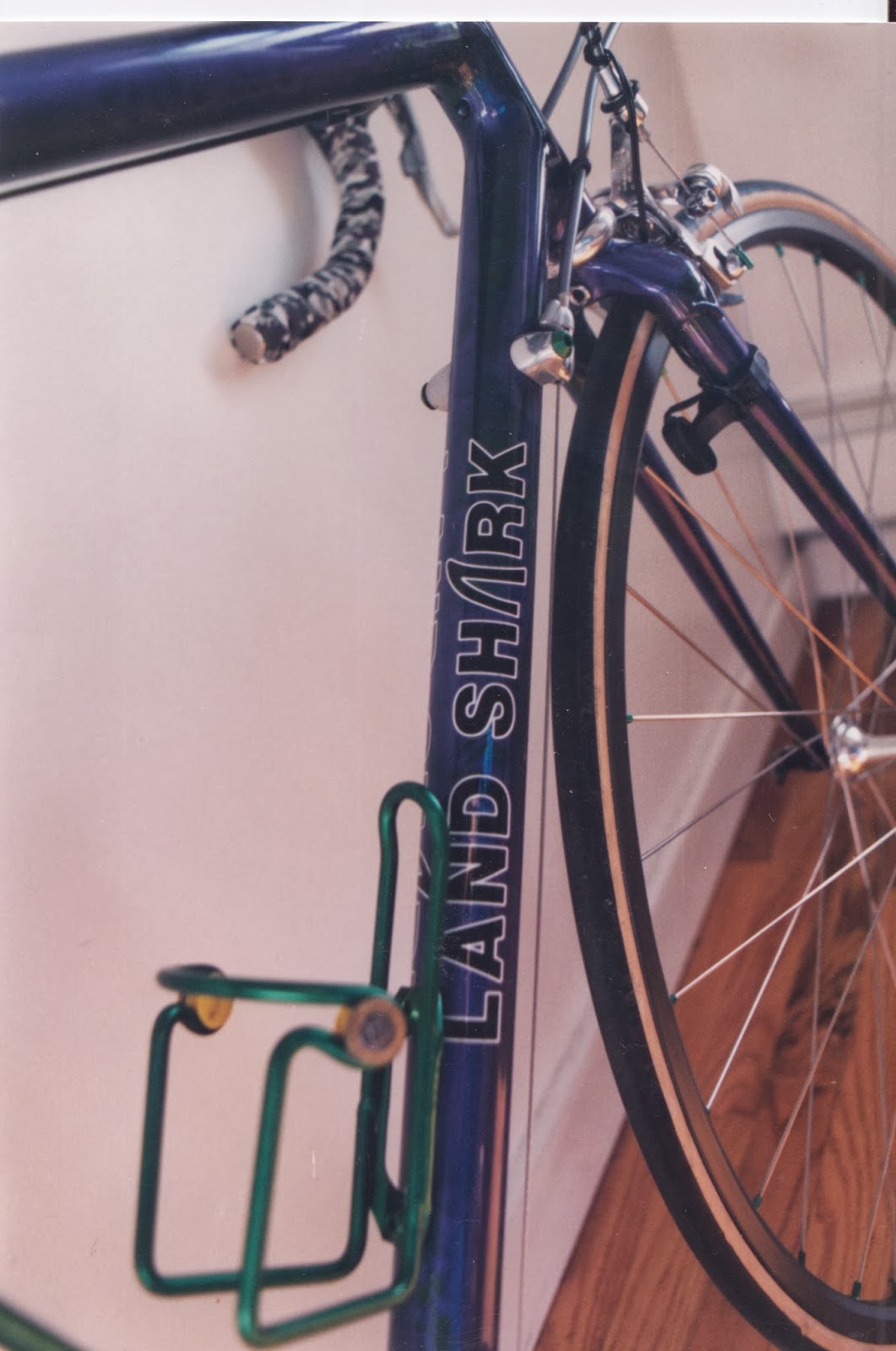When I saw this photo, I remembered why I love classic frames a lot but classic gear systems, not so much.
The Stucchi frame is indeed elegant, especially with the wooden rims and chromed parts. Back in the days when Gino Bartali ruled the pelotons, racers rode bikes much like it.
Most of the bike would not seem out of place today. But the Vittoria gear system would. Still, it represented an advance over anything that had been available previously.
Before derailleur-type mechanisms were created, racers typically rode double-sided rear hubs, sometimes with two sprockets on each side. To change gears, a racer had to dismount and move the chain by hand (if he wanted to use the second gear on the same side of the hub) or "flip" the wheel.
Choosing the right moment for such a maneuver was part of a racer's strategy, and legend has it that breaking a wingnut while trying to "flip" a wheel on a cold day led a certain racer named Tullio Campagnolo to invent the quick-release axles and skewers we use today.
Gear systems like the Vittoria still required the rider to move the chain by hand from one sprocket to another. However, the cyclist did not have to dismount or remove the wheel. He could push the lever on the downtube draw the pulley on the chainstay inward, which slackened the chain and made it possible to push the chain from one side to another with his gloved hand--without getting off the bike.
Bartali won the Giro d'Italia on a Legnano equipped with the Vittoria system. But he didn't win the Tour de France with it, as the race's organizers still forbade derailleurs!
The Stucchi frame is indeed elegant, especially with the wooden rims and chromed parts. Back in the days when Gino Bartali ruled the pelotons, racers rode bikes much like it.
Most of the bike would not seem out of place today. But the Vittoria gear system would. Still, it represented an advance over anything that had been available previously.
Before derailleur-type mechanisms were created, racers typically rode double-sided rear hubs, sometimes with two sprockets on each side. To change gears, a racer had to dismount and move the chain by hand (if he wanted to use the second gear on the same side of the hub) or "flip" the wheel.
Choosing the right moment for such a maneuver was part of a racer's strategy, and legend has it that breaking a wingnut while trying to "flip" a wheel on a cold day led a certain racer named Tullio Campagnolo to invent the quick-release axles and skewers we use today.
Gear systems like the Vittoria still required the rider to move the chain by hand from one sprocket to another. However, the cyclist did not have to dismount or remove the wheel. He could push the lever on the downtube draw the pulley on the chainstay inward, which slackened the chain and made it possible to push the chain from one side to another with his gloved hand--without getting off the bike.
Bartali won the Giro d'Italia on a Legnano equipped with the Vittoria system. But he didn't win the Tour de France with it, as the race's organizers still forbade derailleurs!
















